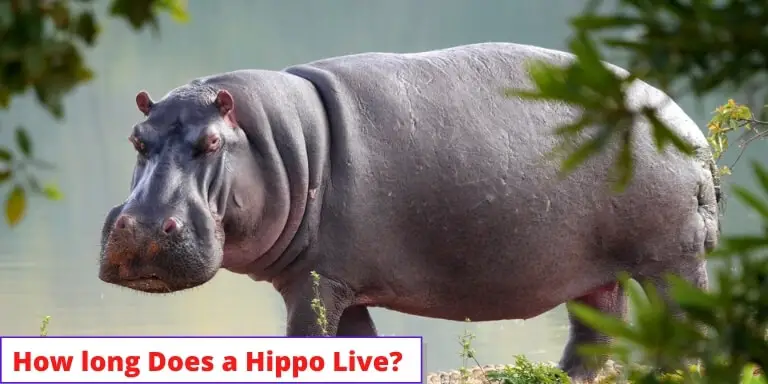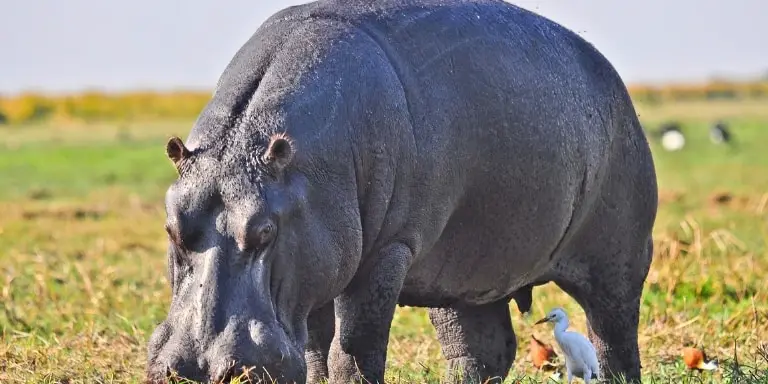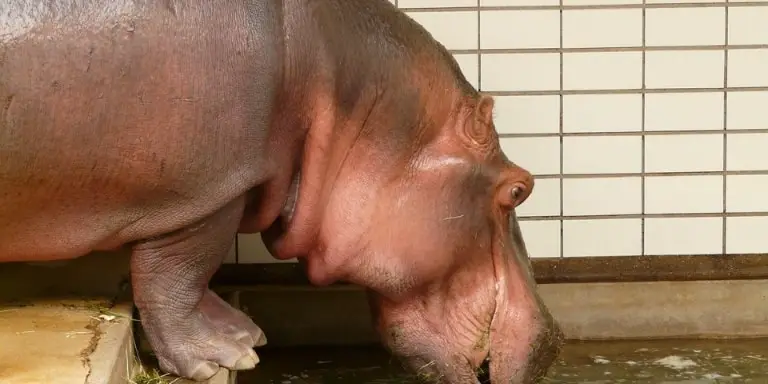One of the most fascinating creatures in Africa is the Hippopotamus. The name comes from Ancient Greek, meaning “river horse” and it is a large semi-aquatic mammal that lives primarily in sub-Saharan Africa.
A hippo can weigh up to 6000 pounds or 3200 kg which makes them one of the world’s heaviest land mammals! Hippos can live for up to 40 years in the wild. They live much longer in captivity and can live to be 50 years old.

Introducing Hippo Life Cycle
Hippos are large, semi-aquatic mammals that live in Africa. They spend most of their time in or near water as they need to keep their body temperature below 40 degrees Celsius.
Besides being one of the world’s largest living land animals, They also have a complex social structure and communicate through vocalizations such as grunts, snorts, and bellows.
What is more interesting about hippos is the fact that they give birth underwater!
The baby hippopotamus is placed underwater and must float to the ground to catch its very first breath. The mother needs to push the baby to the surface to breathe. A newborn calf holds its breath for about 40 seconds.
When the water becomes too dense for them, they sometimes rest on their moms’ backs and swim underwater to drink.

A hippo’s life cycle is divided into many distinct and distinct phases, which are as follows:
1. Newborn hippo and early development (0-1 Year)

Hippos are born after an 8-month gestation period, typically in water. At birth, a calf weighs around 50-110 pounds. For the first few months, calves nurse from their mothers, even underwater.
They are highly dependent on their mothers for protection and nourishment, but they can swim almost immediately after birth. Calves remain close to their mothers, and bonding is essential for survival during this vulnerable stage.
2. Juvenile Stage (1-3 Years)
Around the age of 6-8 months, a hippo calf starts grazing on grass, although it continues nursing for up to a year. During this stage, the young hippos remain within the safety of the pod and learn social behaviors.
The mother’s protection is crucial, as juveniles are still prone to threats from predators like crocodiles and lions. By this age, they start venturing more into the land, gaining strength and learning to defend themselves.
3. Adolescent Stage (3-7 Years)
Adolescence is the period when hippos continue growing and gaining independence. By the age of 3, most of them are fully weaned and rely solely on grass as their primary food.
Males and females in this stage begin to announce themselves socially, learning to navigate the hierarchy of the pod.
However, they still don’t reach full sexual maturity until later. During this period, males are particularly observant of older males’ dominance, which prepares them for future leadership challenges.
4. Adulthood and Maturity (7-25 Years)
Hippos reach sexual maturity at around 7-9 years of age. Adult males become highly territorial and will defend their stretch of river or lake from rivals. They often engage in aggressive confrontations to establish dominance.
Females, on the other hand, are not territorial but play a critical role in the social structure by raising the next generation.
Adult hippos spend their time grazing at night and resting in the water during the day. Mating typically occurs in water, and dominant males have the advantage of securing mating opportunities with females.

5. Aging Stage (25+ Years)
Hippos can live up to 40-50 years in the wild, though they become less active as they age. Elderly hippos may lose some social rank but remain in the pod, often less involved in confrontations.
Over time, their teeth wear down, which can lead to difficulties in feeding. Though slower, they are still powerful and can hold their own in the social structure.
Life cycle stages of Hippopotami
Key aspects of a hippopotamus’s life cycle include body weight, behavior, habitat, threats, and conservation. Each stage is explained in detail below.
Bodyweight
Hippos are among the largest land mammals, with adult males typically weighing between 3,300 to 4,000 pounds (1,500 to 1,800 kg). Females are generally smaller, weighing around 3,000 pounds (1,400 kg).
Despite their massive size, they are surprisingly agile in water, where their weight is supported. Their body weight plays a crucial role in maintaining dominance, especially for males in territorial battles.
Hippos also possess dense bones to help them stay submerged in water while walking along riverbeds, allowing them to navigate their aquatic environment efficiently.
Behavior
The common hippopotamus emerges from the water at night to graze on vegetation, often ascending steep banks and taking the same routes. They typically head to the river at sunrise to nap for the rest of the day. If it is not too warm or windy, they will couch on the rivers to bake sunlight.
Hippopotamuses are known for their aggressive and territorial behavior, often found in the wild. However, it is not always easy to tell if hippos are just being protective or actually want to begin a fight with another animal.
It can also be difficult to tell when or if they have been provoked by humans. When they become angrier, they ‘yawn’ evermore, displaying their large teeth as part of their danger show.

Habitat
Hippos mostly prefer grasses with regular still water, which is not too dense and does not have several stones at the bottom of the pool. The pygmy hippopotamus lives in woods near swamps in West Africa. Hippos are gregarious creatures that congregate in groups known as bloats, pods, or sieges.
Hippos’ pods typically have 10 to 30 members, including men and women, but some classes have almost as many as 200. Whatever the size, the school is usually run by an influential male.
Hippos are known to be violent and dangerous. Hippopotamuses have huge teeth and tusks, which they use to defend themselves from predators.
Threats and Conservation

Hippos are vulnerable due to habitat loss, illegal hunting, and environmental changes. Deforestation, agricultural expansion, and urbanization reduce their habitats while poaching targets them for meat and ivory-like teeth.
Additionally, climate change and water pollution degrade their freshwater environments, impacting food availability and water sources.
Conservation efforts focus on habitat preservation, anti-poaching laws, and protection of wetland areas. International organizations work alongside local governments to enforce regulations and raise awareness about the importance of hippo conservation, helping maintain a stable population in the wild.
Frequently Asked Questions
How long until a hippo grows full?
A hippo typically reaches full physical growth by the age of around 25 years. Hippos continue to grow in size during this period, and they can live for about 45 to 50 years in the wild. This means they spend nearly half of their lives growing.
Their life cycle is marked by several distinct stages, including birth, juvenile, adolescence, adulthood, and old age, with continuous development in their size and social behavior throughout these phases.
How long does a hippo live?
Hippos can live for up to 40 years in the wild. They live much longer in captivity and can live to be 50 years old.
What kind of weather does Hippo live in?
Hippos live in weather of two seasons: arid and rainy. The rainy time lasts just three months, but it can bring more than eight feet of water. The weather in this atmosphere is ever more humid, but there is a brief soothing time during the arid period.
Conclusion
A hippopotamus is a large mammal adapted to both aquatic and terrestrial environments. It is heavily built and can fiercely protect its young from predators or threats, using its size and strength to keep other animals at a distance. Their protective nature, especially in water, ensures the safety of their calves while maintaining their position in the ecosystem.
Related Posts:
